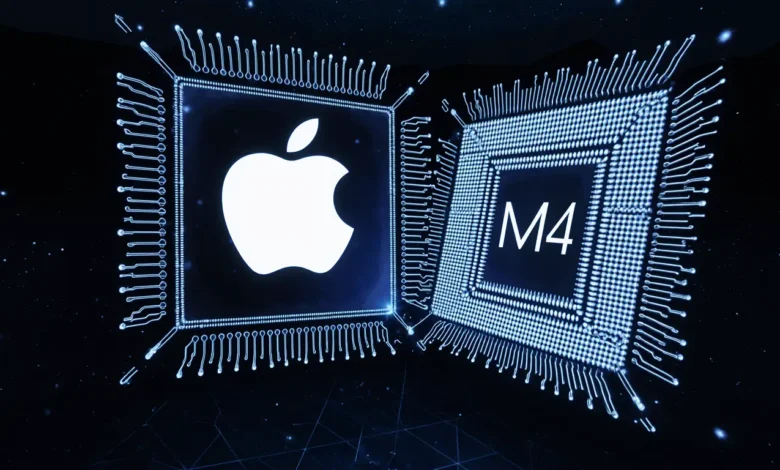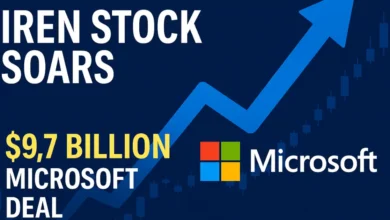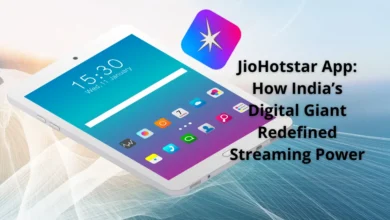Apple M5 Chip vs M4: How the New AI Powerhouse Changes the Game in 2025

Apple M5 Chip sets a new performance and intelligence standard for Apple Silicon, redefining how users experience speed, efficiency, and AI capability on MacBook and iMac devices in 2025.
table of contents
Apple M5 Chip: A Leap Beyond the M4 Generation
When Apple introduced the M4 chip, it marked a solid step forward in efficiency and graphics processing. But with the Apple M5 Chip, the company didn’t just upgrade — it reinvented what “on-device intelligence” means.
The M5 represents Apple’s bold vision of merging computing power with artificial intelligence, transforming its devices into learning, adaptive systems that process information locally and securely.
Unlike the M4, which was primarily focused on refining performance-per-watt ratios, the M5 takes a generative AI-first approach. It’s Apple’s clear response to the growing competition from Qualcomm’s Snapdragon X Elite and NVIDIA’s AI-driven processors, but with an unmistakable Apple twist — privacy, precision, and performance combined.
Apple M5 Chip: The Next Giant Leap in AI Performance for Apple Silicon
The Architecture Behind the Apple M5 Chip
At the heart of the Apple M5 Chip is a redesigned 3-nanometer architecture that enhances every aspect of the silicon pipeline. Apple re-engineered the Neural Engine, CPU, and GPU to work seamlessly under AI-intensive loads.
Key architectural highlights include:
- A 12-core CPU — blending performance and efficiency cores for dynamic power scaling.
- A 40-core GPU — providing real-time rendering for creative workloads and immersive environments.
- An 80 TOPS Neural Engine — five times faster than that in the M4, optimized for large language models and image generation.
- AI Coprocessor — dedicated to low-latency generative processing, allowing Apple devices to execute complex AI functions without cloud support.
This unified design ensures faster context-switching, reduced thermal strain, and higher throughput in AI-driven applications like Final Cut Pro, Logic Pro, and the upcoming “Apple Intelligence” features baked into macOS Sequoia.
Apple’s Vision: Local AI, Global Impact
With the M5, Apple is making a definitive move toward on-device generative AI.
While competitors rely on cloud-based inference, Apple’s approach is radically different — the M5 processes everything locally, ensuring data privacy and instantaneous results.
Features empowered by this shift include:
- Smarter Siri, capable of multi-step reasoning and offline actions.
- Personalized creative tools, generating music, art, and text through Metal and CoreML frameworks.
- Intelligent resource allocation, where the system learns user habits and optimizes power usage in real time.
This design philosophy strengthens Apple’s identity as the privacy-first AI innovator — a contrast to data-driven models from Google or OpenAI integrations in Windows devices.
Apple M5 vs M4: The Real-World Performance Difference
Benchmarks and developer testing reveal just how far Apple has come.
The M5 outperforms the M4 across all critical categories:
| Feature | Apple M4 | Apple M5 |
|---|---|---|
| Neural Engine | 16 TOPS | 80 TOPS |
| CPU Performance | Baseline | +30% faster per watt |
| GPU Rendering | Improved | 2x faster in Metal workloads |
| Generative AI | Limited | Native, on-device models |
| Energy Efficiency | Excellent | Best-in-class |
| Thermal Management | Stable | Adaptive cooling intelligence |
(Note: This table is a simplified summary for clarity; not a technical spec sheet.)
These differences translate into a user experience that feels more fluid, predictive, and autonomous.
Video editors notice real-time rendering improvements; developers experience faster model training; and average users see smarter macOS interactions that anticipate their needs before they act.
The Industry Shockwave: Apple vs NVIDIA and Qualcomm
The introduction of the Apple M5 Chip has rattled the semiconductor landscape.
For the first time, a consumer-grade processor matches — and sometimes surpasses — NVIDIA’s AI inference benchmarks. Qualcomm, on the other hand, faces pressure as Apple’s integration of hardware, software, and ecosystem gives it an unparalleled advantage.
Analysts predict that by 2026, Apple could dominate not only the premium laptop market but also the emerging edge-AI computing sector.
This means devices like the Vision Pro 2 and next-gen iPads will operate as autonomous AI hubs — capable of processing high-dimensional data in real time.
What Makes the Apple M5 Chip a Turning Point
The M5 isn’t just a processor; it’s the foundation for Apple’s next decade of AI products.
By shifting focus from raw speed to intelligent efficiency, Apple has set a precedent for what personal computing should look like — personal, private, and perceptive.
The chip also enables developers to build apps that interact with users in more human-like ways. From adaptive user interfaces to real-time learning systems, the M5 is essentially the “brain” that makes Apple’s ecosystem more sentient than ever.
Future Outlook: Beyond the M5
Apple’s roadmap already points toward a quantum-inspired M6 architecture, emphasizing AI-assisted computation at the silicon level.
Expect enhanced federated learning integration with iCloud, specialized language cores, and perhaps the first hybrid quantum-ML acceleration units — all derived from the foundational technologies introduced by the M5.
In essence, the Apple M5 Chip is not just powering Macs — it’s powering the next era of intelligent computing.
Conclusion
The Apple M5 Chip marks the most transformative leap in Apple Silicon history.
By merging extreme performance with privacy-first AI processing, Apple has not only outpaced competitors but also redefined what users should expect from their devices.
The M5 isn’t about faster machines — it’s about smarter relationships between humans and technology.
As 2025 unfolds, one thing is certain: Apple isn’t just following the AI revolution — it’s leading it.
FAQs
1. What’s the biggest upgrade in the Apple M5 Chip compared to M4?
The M5’s Neural Engine is five times faster, capable of 80 trillion operations per second, enabling true on-device generative AI.
2. Will the M5 Chip be available in all Apple devices?
Initially, it will power the 2025 MacBook Pro and iMac, with potential rollouts in future iPad Pro and Vision Pro models.
3. Is the M5 Chip better for AI developers?
Yes. Apple has enhanced CoreML, Metal, and Swift frameworks to utilize the full AI acceleration potential of the M5.
4. How does the M5 maintain privacy?
It processes all AI computations locally, keeping user data on the device without cloud dependency.
5. What future innovations might follow the M5?
The upcoming M6 could introduce quantum-level AI acceleration and federated learning through iCloud.
Discover more from Feenanoor
Subscribe to get the latest posts sent to your email.











